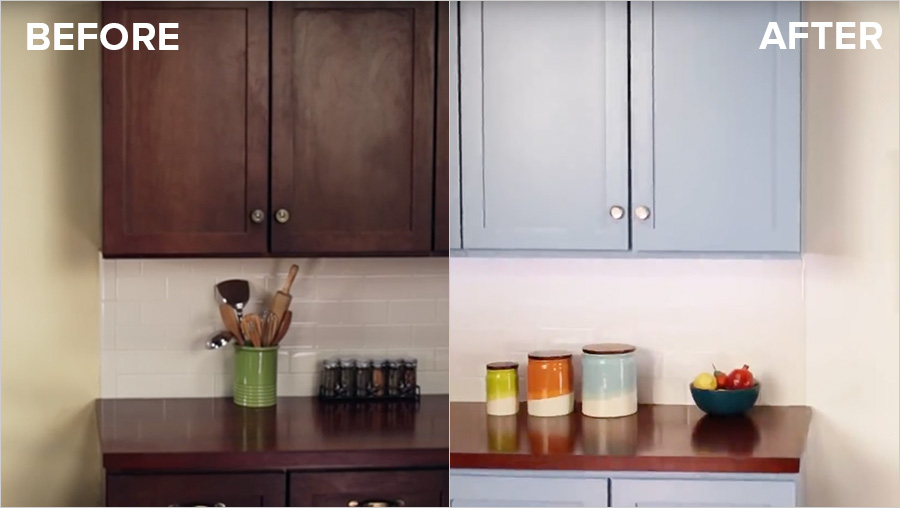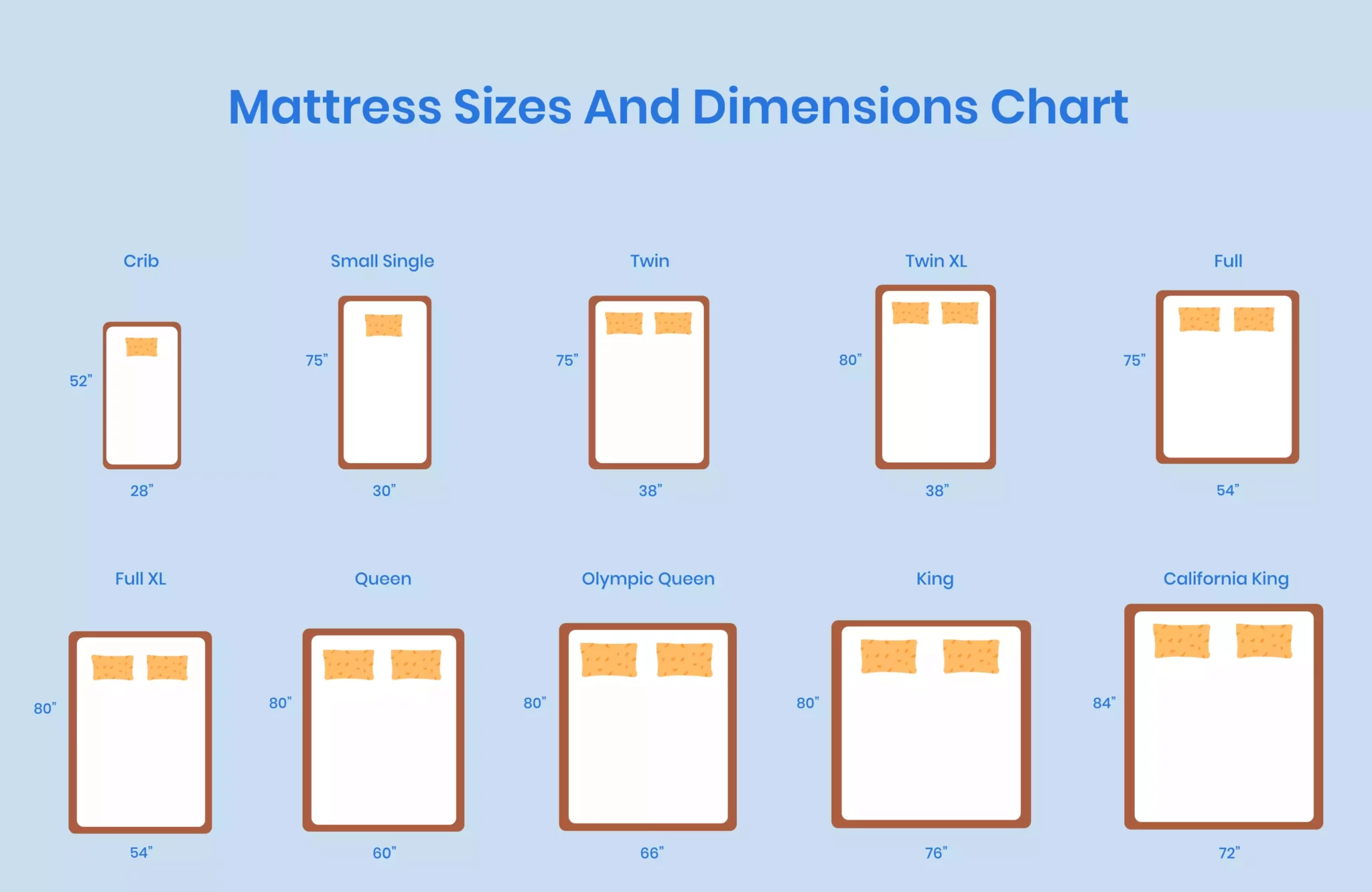1. Choosing the Right Paint Color for Your Kitchen Walls
Repainting your kitchen walls can give your entire kitchen a fresh new look, but choosing the right paint color can be daunting. With so many options available, it can be overwhelming to make a decision. Start by considering the overall style and color scheme of your kitchen. Do you prefer a bright and airy space, or a cozy and warm atmosphere? This will help narrow down your choices. Additionally, consider the size and natural lighting of your kitchen. Lighter colors can make a small kitchen appear larger, while darker colors can add depth and warmth to a larger space.
2. How to Prep Your Kitchen Walls for Repainting
Preparation is key for a successful kitchen wall repaint. Begin by clearing the walls of any decorations, outlet covers, and switch plates. Next, lightly sand the walls to remove any rough patches or imperfections. This will help ensure a smooth and even paint application. If there are any holes or cracks, fill them in with spackling paste and allow it to dry completely before sanding. Finally, wipe down the walls with a damp cloth to remove any dust or debris.
3. DIY Kitchen Wall Repainting Tips and Tricks
Repainting your kitchen walls yourself can save you time and money. To ensure a professional-looking finish, follow these tips and tricks. Invest in high-quality paint and tools, such as a roller, brush, and drop cloths. This will make the painting process smoother and more efficient. Use painter's tape to protect areas that you do not want to paint, such as baseboards and cabinets. Start painting from the top of the wall and work your way down, using even strokes and overlapping them for a consistent finish.
4. The Best Paint Finishes for Kitchen Walls
Choosing the right paint finish for your kitchen walls is just as important as the color. Matte finishes are a popular choice for kitchen walls as they are easy to clean and can hide imperfections. However, they are not as durable as other finishes and may not be suitable for high-traffic areas. Semi-gloss and satin finishes are also good options for kitchen walls as they are more durable and easier to clean. They are also great for adding a subtle sheen to your walls.
5. How to Repair and Patch Kitchen Wall Imperfections
Before painting your kitchen walls, it is important to repair any imperfections to ensure a smooth and even finish. Use spackling paste to fill in any holes or cracks, and sand it down once it has dried. For larger imperfections, such as dents or scratches, use joint compound to fill them in. Once it has dried, sand it down and wipe away any excess dust. This will create a seamless surface for painting.
6. Painting Techniques for a Professional-Looking Kitchen Wall
While it may seem simple, there are techniques that can help you achieve a professional-looking finish when repainting your kitchen walls. To avoid visible brush or roller strokes, use a technique called "cutting in." This involves painting the edges and corners of the wall with a brush before using a roller to cover the rest of the wall. This will create a clean and seamless finish. Also, try using a paint extender to help the paint go on smoother and reduce the appearance of brush or roller marks.
7. The Benefits of Using Primer on Kitchen Walls Before Repainting
Many people skip the primer step when repainting their kitchen walls, but it can make a significant difference in the overall finish of your walls. Primer helps create a smooth and even surface for the paint to adhere to. It also helps the paint color appear more vibrant and can prevent stains or imperfections from bleeding through the new paint. Additionally, using a primer can help reduce the number of coats of paint needed, saving you time and money.
8. How to Choose the Right Type of Paint for Your Kitchen Walls
When it comes to choosing the right type of paint for your kitchen walls, there are a few factors to consider. If you have young children or pets, a washable and durable paint may be a good choice. If your kitchen is prone to moisture, such as near the sink or stove, a mold and mildew resistant paint may be a better option. Additionally, consider if you want a low or no VOC paint, which is better for the environment and your health.
9. Tips for Painting Kitchen Walls with a Brush or Roller
Using a brush or roller to paint your kitchen walls requires some skill and technique to achieve a smooth and even finish. When using a brush, start by dipping one-third of the bristles into the paint and tapping off any excess. Use long and even strokes to cover the wall, and avoid overloading the brush with paint. When using a roller, use a roller tray to evenly distribute the paint and roll in a "W" pattern to cover the wall. Avoid pressing too hard on the roller, as this can create roller marks.
10. How to Properly Clean and Maintain Your Newly Repainted Kitchen Walls
Congratulations, you have successfully repainted your kitchen walls! Now, it is important to properly clean and maintain them to keep them looking fresh and new. Use a mild cleaner and a soft cloth to wipe down the walls as needed. Avoid using harsh chemicals or abrasive cleaning tools as they can damage the paint. Additionally, touch up any imperfections or marks with leftover paint to keep your kitchen walls looking pristine.
Transform Your Kitchen with a Fresh Coat of Paint
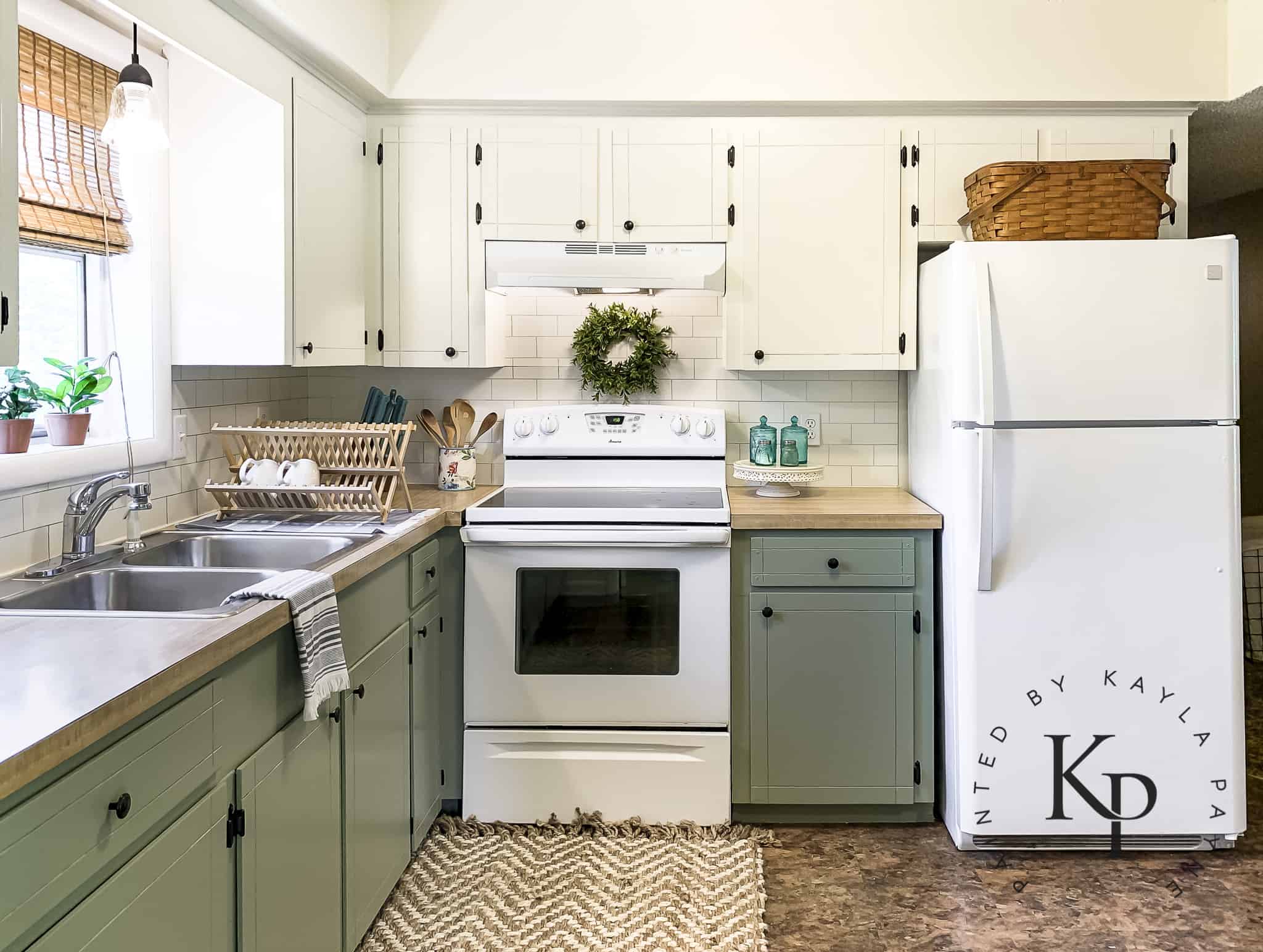
Why Repainting Your Kitchen Walls Can Make a Big Difference
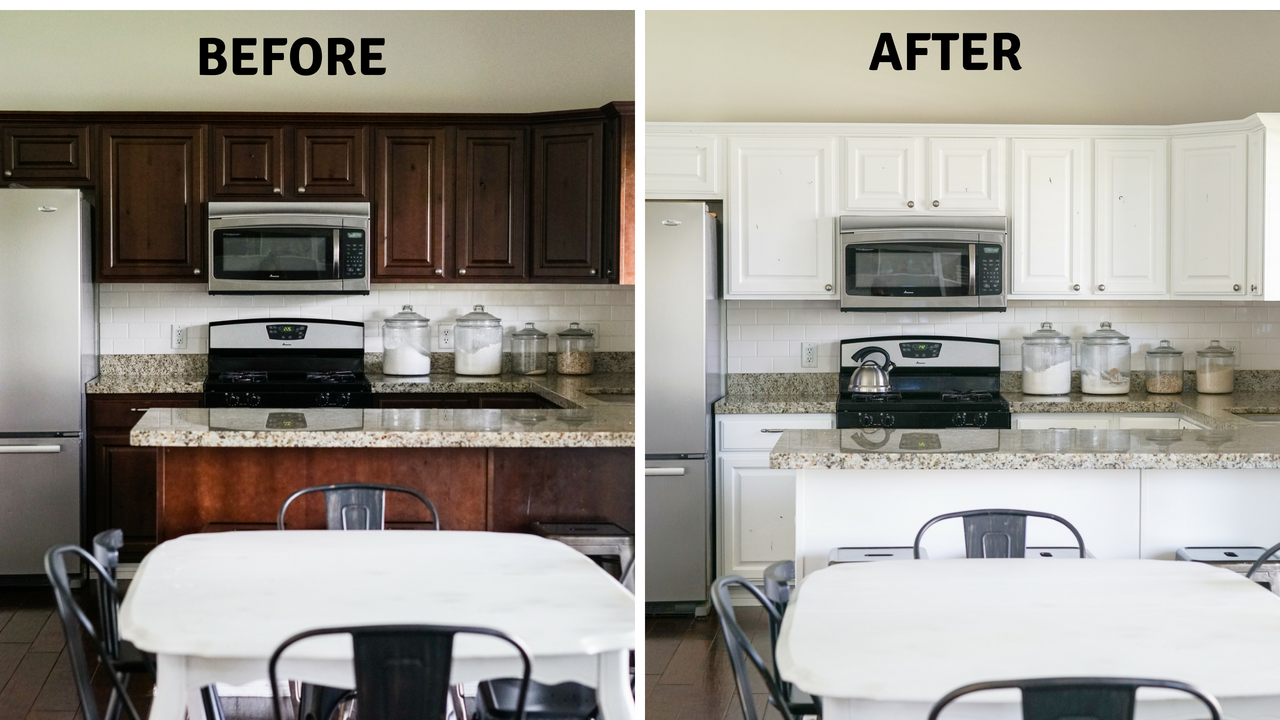 If you're looking to revamp your kitchen without breaking the bank, repainting your walls is a great place to start. Not only is it a cost-effective option, but it can also make a significant impact on the overall design of your house. The kitchen is often considered the heart of the home, and giving it a fresh new look can breathe life into the space and create a more inviting atmosphere. So, why wait? Let's explore the benefits of repainting your kitchen walls and how it can transform your house design.
Enhance Your Kitchen's Aesthetics
One of the most significant advantages of repainting your kitchen walls is the instant boost it gives to your house's overall design. The color of your kitchen walls sets the tone for the entire room and can make or break its aesthetic appeal. Choosing the right color can make your kitchen feel more spacious, cozy, or modern, depending on your preferred style. It's also an opportunity to add a pop of color and personality to your kitchen, making it a more enjoyable space for cooking and entertaining.
Upgrade Your Kitchen's Functionality
Apart from aesthetics, repainting your kitchen walls can also enhance its functionality. For example, if you have a small kitchen, using light colors can create an illusion of a larger space. On the other hand, darker shades can add a touch of sophistication and warmth to a larger kitchen. You can also use different colors to designate specific areas within your kitchen, such as a bright accent wall for the dining area or a calming blue for the cooking area. These color choices can help improve the flow and organization of your kitchen, making it a more efficient space to work in.
Protect Your Walls and Increase Your Home's Value
In addition to the visual benefits, repainting your kitchen walls can also protect them from wear and tear. Cooking and food preparation can cause stains, grease, and other damage to your walls over time. A fresh coat of paint not only covers up these imperfections but also acts as a protective barrier, making it easier to clean and maintain your walls. Moreover, repainting your kitchen walls is a simple and cost-effective way to increase the value of your home. A well-designed kitchen is a huge selling point for potential buyers, and a fresh coat of paint can make your kitchen stand out in a competitive housing market.
If you're looking to revamp your kitchen without breaking the bank, repainting your walls is a great place to start. Not only is it a cost-effective option, but it can also make a significant impact on the overall design of your house. The kitchen is often considered the heart of the home, and giving it a fresh new look can breathe life into the space and create a more inviting atmosphere. So, why wait? Let's explore the benefits of repainting your kitchen walls and how it can transform your house design.
Enhance Your Kitchen's Aesthetics
One of the most significant advantages of repainting your kitchen walls is the instant boost it gives to your house's overall design. The color of your kitchen walls sets the tone for the entire room and can make or break its aesthetic appeal. Choosing the right color can make your kitchen feel more spacious, cozy, or modern, depending on your preferred style. It's also an opportunity to add a pop of color and personality to your kitchen, making it a more enjoyable space for cooking and entertaining.
Upgrade Your Kitchen's Functionality
Apart from aesthetics, repainting your kitchen walls can also enhance its functionality. For example, if you have a small kitchen, using light colors can create an illusion of a larger space. On the other hand, darker shades can add a touch of sophistication and warmth to a larger kitchen. You can also use different colors to designate specific areas within your kitchen, such as a bright accent wall for the dining area or a calming blue for the cooking area. These color choices can help improve the flow and organization of your kitchen, making it a more efficient space to work in.
Protect Your Walls and Increase Your Home's Value
In addition to the visual benefits, repainting your kitchen walls can also protect them from wear and tear. Cooking and food preparation can cause stains, grease, and other damage to your walls over time. A fresh coat of paint not only covers up these imperfections but also acts as a protective barrier, making it easier to clean and maintain your walls. Moreover, repainting your kitchen walls is a simple and cost-effective way to increase the value of your home. A well-designed kitchen is a huge selling point for potential buyers, and a fresh coat of paint can make your kitchen stand out in a competitive housing market.
Conclusion
 In conclusion, repainting your kitchen walls is a simple yet effective way to transform your house design. It can enhance the aesthetics, functionality, and value of your kitchen, making it a more enjoyable space for you and your family. So, whether you're looking for a quick home improvement project or preparing to put your house on the market, consider repainting your kitchen walls for a fresh and renewed look.
In conclusion, repainting your kitchen walls is a simple yet effective way to transform your house design. It can enhance the aesthetics, functionality, and value of your kitchen, making it a more enjoyable space for you and your family. So, whether you're looking for a quick home improvement project or preparing to put your house on the market, consider repainting your kitchen walls for a fresh and renewed look.







































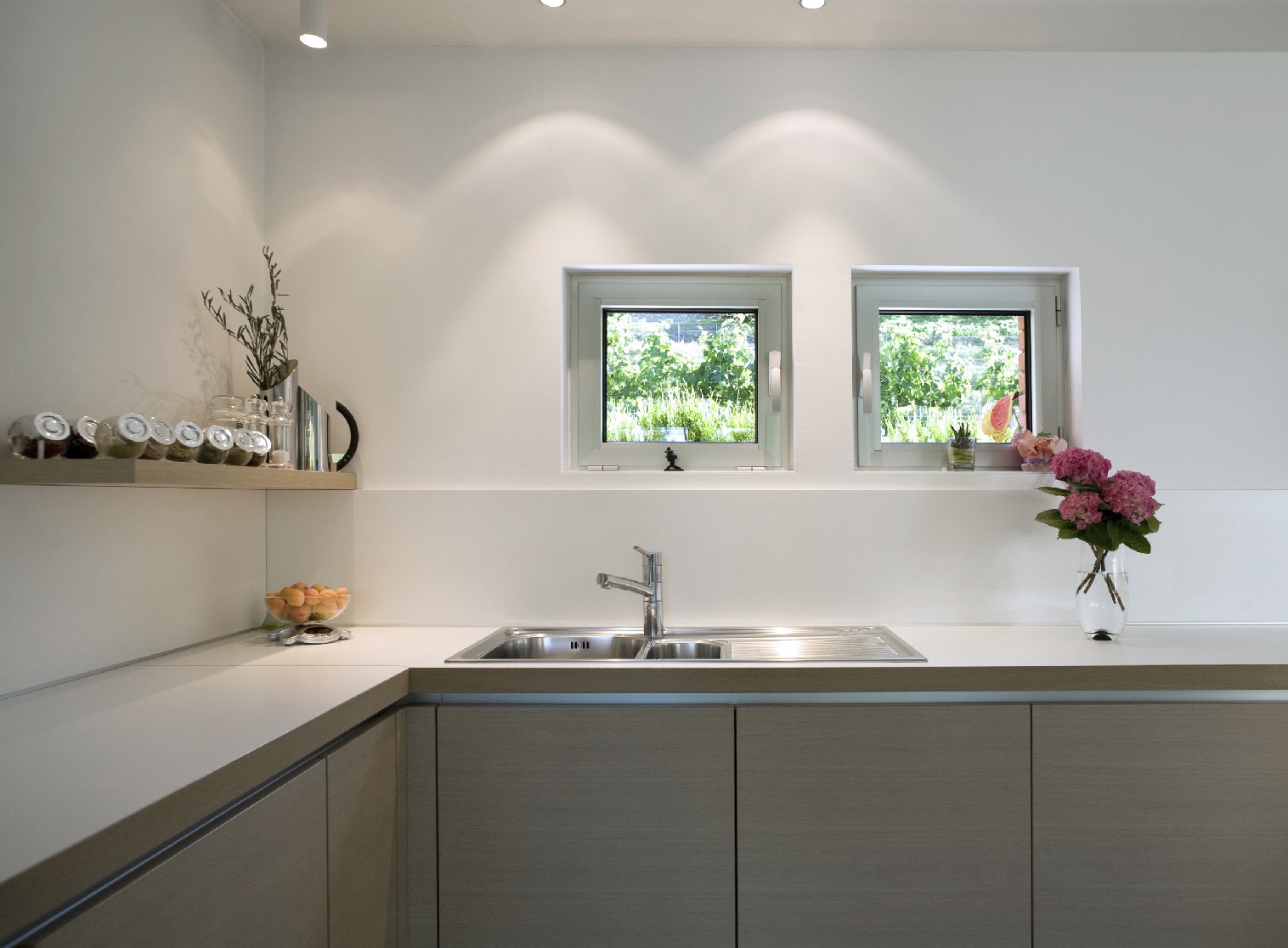





















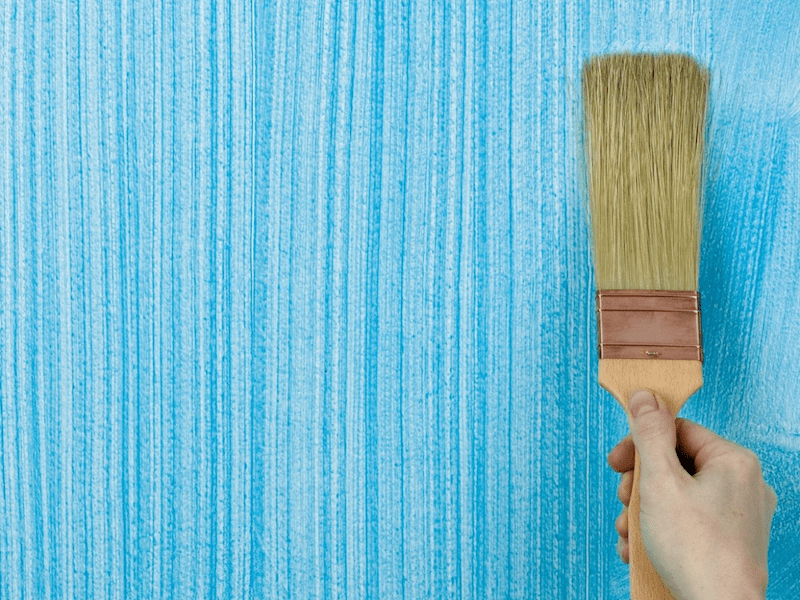
.jpg)

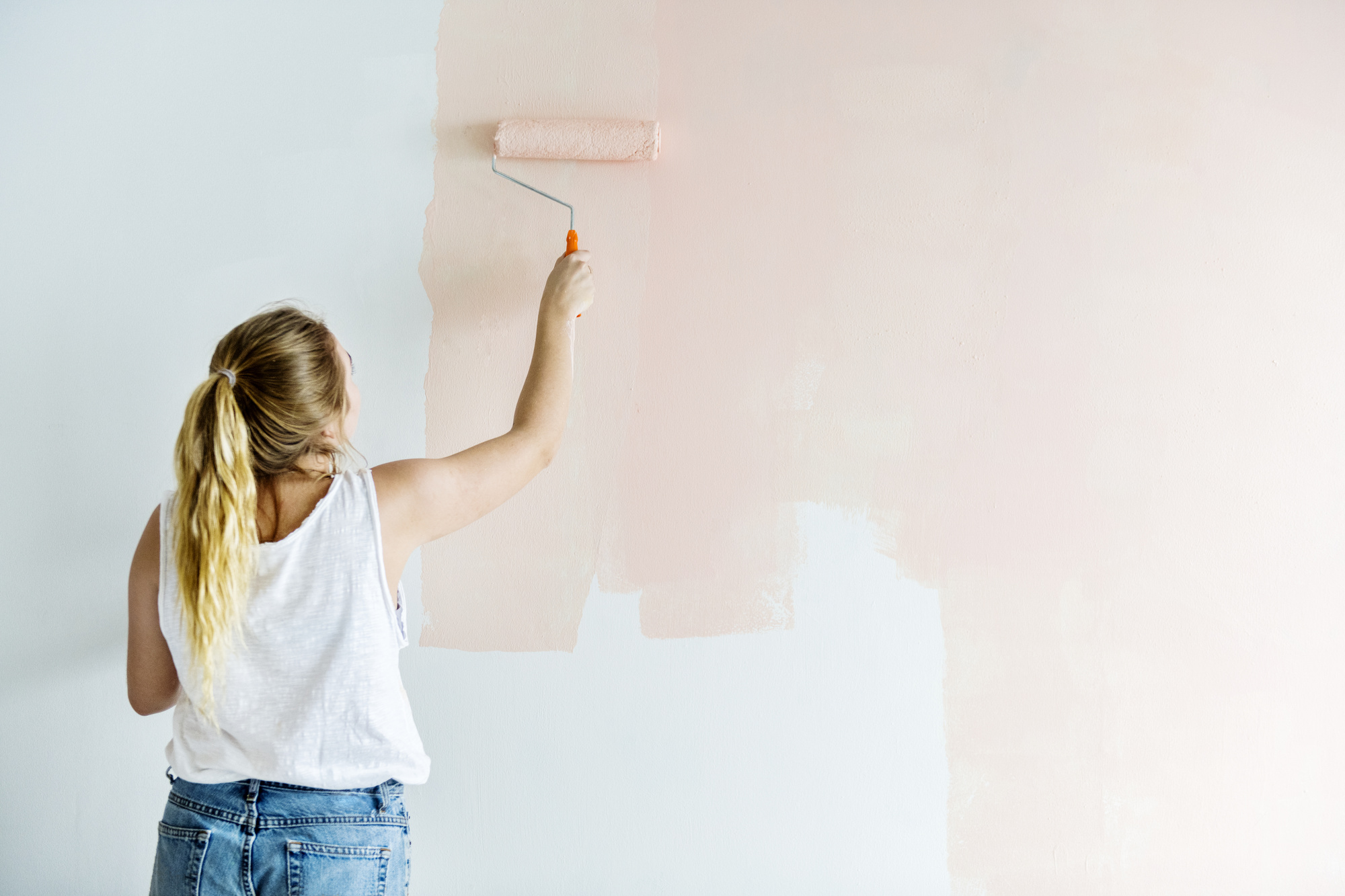










:max_bytes(150000):strip_icc()/scraping-before-paint-92264154-7d288005b33f476784972831c82eea43.jpg)




